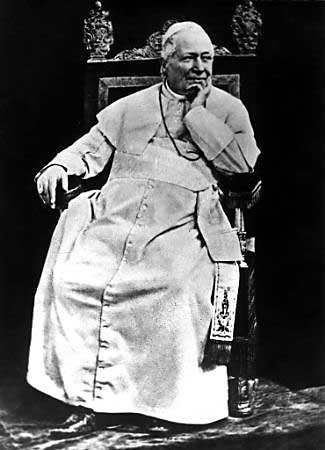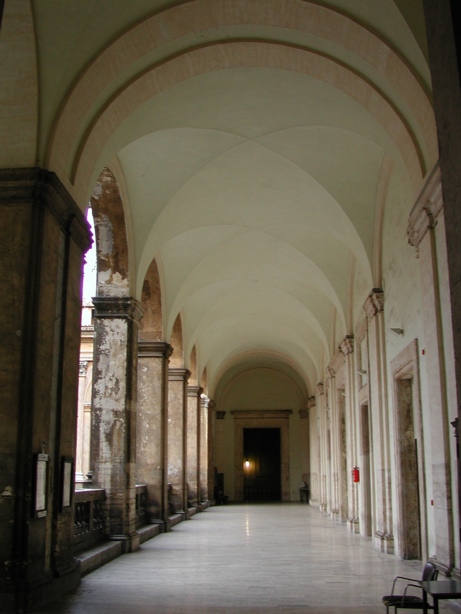|
Vincenzo Moretti
Vincenzo Moretti (14 November 1815 – 6 October 1881) was an Italian Roman Catholic cardinal and the Archbishop of Ravenna from 1871 until his resignation in 1879. He was elevated to the cardinalate in late 1877. He served first as the Bishop of Comacchio (1855–60) and then as the Bishop of Cesena (1860-1867); he later served as the Bishop of Imola (1867–71) before being transferred to the Ravenna archbishopric. He participated in the 1878 conclave that elected Pope Leo XIII Pope Leo XIII ( it, Leone XIII; born Vincenzo Gioacchino Raffaele Luigi Pecci; 2 March 1810 – 20 July 1903) was the head of the Catholic Church from 20 February 1878 to his death in July 1903. Living until the age of 93, he was the second-old .... References Bibliography * * * 1815 births 1881 deaths 19th-century Italian cardinals Cardinals created by Pope Pius IX {{Italy-RC-cardinal-stub ... [...More Info...] [...Related Items...] OR: [Wikipedia] [Google] [Baidu] |
His Eminence
His Eminence (abbreviation H.Em. or H.E. or HE) is a style (manner of address), style of reference for high nobility, still in use in various religious contexts. Catholicism The style remains in use as the official style or standard form of address in reference to a cardinal (Catholicism), cardinal of the Catholic Church, reflecting his status as a Prince of the Church. A longer, and more formal, title is "His (or Your when addressing the cardinal directly) Most Reverend Eminence". Patriarchs of Eastern Catholic Churches who are also cardinals may be addressed as "His Eminence" or by the style particular to Catholic patriarchs, His Beatitude. When the Grand master (order), Grand Master of the Sovereign Military Order of Malta, the head of state of their sovereign territorial state comprising the island of Malta until 1797, who had already been made a Reichsfürst (i.e., prince of the Holy Roman Empire) in 1607, became (in terms of honorary order of precedence, not in the act ... [...More Info...] [...Related Items...] OR: [Wikipedia] [Google] [Baidu] |
Bishop Of Comacchio
The Diocese of Comacchio (Latin: Dioecesis Comaclensis) was a Roman Catholic diocese located in the coastal town of Comacchio in the province of Ferrara and region of Emilia Romagna, Italy. In 1986, the diocese of Commachio was united with the diocese of Ferrara, and lost its individual identity. History It is often stated that the earliest bishop of Comacchio, indeed the first bishop, was Pacatianus, who is said to have attended the Roman synod of 502. The subscription ''cumiaclensis'' in the Acts of the synod, however, has been shown to be a misreading of ''corneliensis'' (diocese of Imola). An anonymous bishop, said to have been operating in 592, is known only from a forged bull of Pope Gregory I, and must therefore be excluded. The earliest known bishop is Vincentius, who belongs to the first quarter of the 8th century. In 1579, Bishop Ercole Sacrati (1563–1591) presided over a diocesan synod, which issued a set of Constitutions for the government of the diocese of Comacchio. ... [...More Info...] [...Related Items...] OR: [Wikipedia] [Google] [Baidu] |
1881 Deaths
Events January–March * January 1– 24 – Siege of Geok Tepe: Russian troops under General Mikhail Skobelev defeat the Turkomans. * January 13 – War of the Pacific – Battle of San Juan and Chorrillos: The Chilean army defeats Peruvian forces. * January 15 – War of the Pacific – Battle of Miraflores: The Chileans take Lima, capital of Peru, after defeating its second line of defense in Miraflores. * January 24 – William Edward Forster, chief secretary for Ireland, introduces his Coercion Bill, which temporarily suspends habeas corpus so that those people suspected of committing an offence can be detained without trial; it goes through a long debate before it is accepted February 2. * January 25 – Thomas Edison and Alexander Graham Bell form the Oriental Telephone Company. * February 13 – The first issue of the feminist newspaper ''La Citoyenne'' is published by Hubertine Auclert. * February 16 – The Canadi ... [...More Info...] [...Related Items...] OR: [Wikipedia] [Google] [Baidu] |
1815 Births
Events January * January 2 – Lord Byron marries Anna Isabella Milbanke in Seaham, county of Durham, England. * January 3 – Austria, Britain, and Bourbon-restored France form a secret defensive alliance treaty against Prussia and Russia. * January 8 – Battle of New Orleans: American forces led by Andrew Jackson defeat British forces led by Sir Edward Pakenham. American forces suffer around 60 casualties and the British lose about 2,000 (the battle lasts for about 30 minutes). * January 13 – War of 1812: British troops capture Fort Peter in St. Marys, Georgia, the only battle of the war to take place in the state. * January 15 – War of 1812: Capture of USS ''President'' – American frigate , commanded by Commodore Stephen Decatur, is captured by a squadron of four British frigates. February * February – The Hartford Convention arrives in Washington, D.C. * February 3 – The first commercial cheese factory is founded in S ... [...More Info...] [...Related Items...] OR: [Wikipedia] [Google] [Baidu] |
Footnotes
A note is a string of text placed at the bottom of a page in a book or document or at the end of a chapter, volume, or the whole text. The note can provide an author's comments on the main text or citations of a reference work in support of the text. Footnotes are notes at the foot of the page while endnotes are collected under a separate heading at the end of a chapter, volume, or entire work. Unlike footnotes, endnotes have the advantage of not affecting the layout of the main text, but may cause inconvenience to readers who have to move back and forth between the main text and the endnotes. In some editions of the Bible, notes are placed in a narrow column in the middle of each page between two columns of biblical text. Numbering and symbols In English, a footnote or endnote is normally flagged by a superscripted number immediately following that portion of the text the note references, each such footnote being numbered sequentially. Occasionally, a number between brack ... [...More Info...] [...Related Items...] OR: [Wikipedia] [Google] [Baidu] |
Pope Leo XIII
Pope Leo XIII ( it, Leone XIII; born Vincenzo Gioacchino Raffaele Luigi Pecci; 2 March 1810 – 20 July 1903) was the head of the Catholic Church from 20 February 1878 to his death in July 1903. Living until the age of 93, he was the second-oldest-serving pope, and the third-longest-lived pope in history, before Pope Benedict XVI as Pope emeritus, and had the List of popes by length of reign, fourth-longest reign of any, behind those of Saint Peter, St. Peter, Pius IX (his immediate predecessor) and John Paul II. He is well known for his intellectualism and his attempts to define the position of the Catholic Church with regard to modern thinking. In his famous 1891 Papal encyclical, encyclical ''Rerum novarum'', Pope Leo outlined the rights of workers to a fair wage, safe working conditions, and the formation of trade unions, while affirming the rights of property and free enterprise, opposing both socialism and laissez-faire capitalism. With that encyclical, he became popularly ... [...More Info...] [...Related Items...] OR: [Wikipedia] [Google] [Baidu] |
Papal Conclave, 1878
The 1878 papal conclave, which resulted from the death of Pope Pius IX on 7 February 1878, met from 18 to 20 February. The conclave followed the longest reign of any other pope since Saint Peter. It was the first election of a pope who would not rule the Papal States. It was the first to meet in the Apostolic Palace in the Vatican because the venue used earlier in the 19th century, the Quirinal Palace, was now the palace of the King of Italy, Umberto I. Questions facing the cardinals When the cardinals assembled, they faced a dilemma. Should they choose a pope who would continue to espouse Pius IX's reactionary religious and political views, and would continue to refuse to accept Italy's ''Law of Guarantees'' guaranteeing the pope religious liberty in the Kingdom of Italy? Or should they turn away from the policies of Pius IX and choose a more liberal pope who could work for reconciliation with the King of Italy? Would choosing such a policy be seen as a betrayal of Pius IX, t ... [...More Info...] [...Related Items...] OR: [Wikipedia] [Google] [Baidu] |
Collegio Romano
The Roman College ( la, Collegium Romanum, it, Collegio Romano) was a school established by St. Ignatius of Loyola in 1551, just 11 years after he founded the Society of Jesus (Jesuits). It quickly grew to include classes from elementary school through university level and moved to several successive locations to accommodate its burgeoning student population. With the patronage of Pope Gregory XIII, the final seat of the Roman College was built in 1584 near the center of Rome's most historic Pigna district, on what today is called Piazza del Collegio Romano, adding the church of St. Ignatius in 1626, and a renowned observatory in 1787. The college remained at this location for 286 years until the revolutionary Capture of Rome in 1870.In 1870, the new Italian government confiscated the property of the university and their building (that eventually became the Ennio Quirino Visconti Liceo Ginnasio), which forced the university to transfer to the Palazzo Gabrielli-Borromeo on the ... [...More Info...] [...Related Items...] OR: [Wikipedia] [Google] [Baidu] |
Bishop Of Imola
The Roman Catholic Diocese of Imola ( la, Diocesis Imolensis) is a territory in Romagna, northern Italy. It is a suffragan of the Archdiocese of Bologna."Diocese of Imola" ''''. David M. Cheney. Retrieved February 29, 2016."Diocese of Imola" ''GCatholic.org''. Gabriel Chow. Retrieved February 29, 2016. The diocese had originally been a suffragan of the metropolitan of Milan, and was then subject to the Archbishop of Ravenna until 1582, when |
Bishop Of Cesena
The Italian Catholic Diocese of Cesena-Sarsina in Emilia Romagna was created on September 30, 1986, after the Diocese of Sarsina was united with the historic Diocese of Cesena as a suffragan of the Archdiocese of Ravenna-Cervia."Diocese of Cesena-Sarsina" ''''. David M. Cheney. Retrieved February 29, 2016. "Diocese of Cesena-Sarsina" ''GCatholic.org''. Gabriel Chow. Retrieved February 29, 2016. The current bishop of Cesena-Sarsina is Douglas Regattieri. He was appointed on October 8, 2010, after Bisho ... [...More Info...] [...Related Items...] OR: [Wikipedia] [Google] [Baidu] |
Kingdom Of Italy
The Kingdom of Italy ( it, Regno d'Italia) was a state that existed from 1861, when Victor Emmanuel II of Kingdom of Sardinia, Sardinia was proclamation of the Kingdom of Italy, proclaimed King of Italy, until 1946, when civil discontent led to an 1946 Italian institutional referendum, institutional referendum to abandon the monarchy and form the modern Italy, Italian Republic. The state resulted from a decades-long process, the ''Italian unification, Risorgimento'', of consolidating the different states of the Italian Peninsula into a single state. That process was influenced by the House of Savoy, Savoy-led Kingdom of Sardinia, which can be considered Italy's legal Succession of states, predecessor state. Italy Third Italian War of Independence, declared war on Austrian Empire, Austria in alliance with Kingdom of Prussia, Prussia in 1866 and received the region of Veneto following their victory. Italian troops Capture of Rome, entered Rome in 1870, ending Papal States, more tha ... [...More Info...] [...Related Items...] OR: [Wikipedia] [Google] [Baidu] |
Roman Catholic Archdiocese Of Ravenna-Cervia
The Archdiocese of Ravenna-Cervia ( la, Archidioecesis Ravennatensis-Cerviensis) is a metropolitan archdiocese of the Roman Catholic Church in the Emilia-Romagna region of Italy."Archdiocese of Ravenna-Cervia" ''''. David M. Cheney. Retrieved March 13, 2017.."Metropolitan Archdiocese of Ravenna–Cervia" ''GCatholic.org''. Gabriel Chow. Retrieved March 13, 2017.. The |




